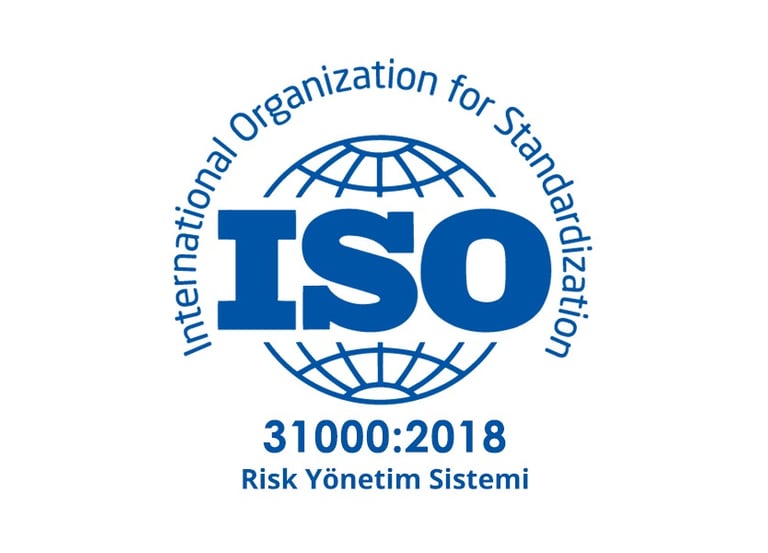
ISO 31000
ISO 31000: Risk Management
ISO 31000 is an international standard developed for risk management. It provides a framework for organizations to effectively identify, assess, and manage risks. This standard assists organizations in making more informed decisions about risks throughout all of their processes.
Objectives of ISO 31000
To provide guidance for risk management.
To support the organization in achieving its objectives.
To minimize the impact of risks while capitalizing on opportunities. (Bu cümledeki "değerlendirmek" fiilini "make use of," "take advantage of," ya da "leverage" ile de ifade edebiliriz, ama "capitalizing on" daha güçlü ve proaktif bir yaklaşımı vurgular.)
To provide assurance to stakeholders.
To enhance the organization's resilience.
Key Principles of ISO 31000
Value Creation: Risk management should support the achievement of the organization's objectives.
Systematic and Structured: Risk management should follow a consistent and repeatable process.
Customized (or Tailored): Risk management must be tailored to the organization's culture and context. ("Should be adapted" yerine "must be tailored" daha güçlü bir ifade.)
Integrated Approach: Risk management must be integrated into all organizational processes. ("All of the organization's processes" yerine daha kısası tercih edilebilir.)
Dynamic: Risk management must be able to adapt to changing internal and external conditions. ("Should be able" yerine "must be able" yine daha güçlü bir ifade.)
Inclusive and Transparent: It must ensure the participation of all stakeholders and follow a transparent process.
Continual Improvement: Risk management must be continually improved.


Benefits of ISO 31000
Strategic Advantage: Enables more informed and data-driven decision-making.
Efficient Resource Utilization: Managing risks allows for more efficient use of resources.
Resilience and Security: Enhances the organization's preparedness for unexpected events.
Competitive Advantage: Effective risk management provides an advantage over competitors in the industry.
ISO 31000 Risk Management Process
1. Establishing the Context
The organization's internal and external context is defined.
The objectives of risk management are established.
2. Risk Identification
The type, source, and potential impacts of risks are identified.
3. Risk Assessment
Risk Analysis: The likelihood and impact of risks are analyzed.
Risk Evaluation: Risks are prioritized.
4. Risk Treatment
Strategies are developed to mitigate, avoid, transfer, or accept risks.
5. Monitoring and Review
The effectiveness of risks and implemented measures is regularly evaluated.
6. Communication and Consultation
Continuous communication with stakeholders is maintained, and their participation in risk processes is encouraged.
Contact Us to Meet Your ISO Certification Needs and Increase Your Efficiency.
We offer affordable and effective solutions tailored to your needs.
The information presented on this website does not constitute legal advice and is intended for informational purposes only. KompassEurope.com.tr assumes no responsibility for any errors or omissions in the information contained on this website. Any decisions made or actions taken by the reader based on this information are solely at the reader's own risk, and KompassEurope.com.tr shall not be held liable for any legal consequences arising from such decisions or actions. Readers are strongly advised to seek professional legal counsel regarding their specific circumstances and concerns.
© 2025 Kompass Europe. All rights reserved. The contents of this website belong to Kompass Europe and are protected by copyright laws. Copying, publishing, distributing or any commercial use of the information on the website is possible only with written permission. By using this site, you agree to our Terms of Use and Privacy Policy.
